Taima-dera and Princess Chujo’s Mandala
Thanks to numerous detailed guidebooks and websites about Japan, it is very common to see the tourists even at remote or less famous temples and shrines. However, on the border between Nara and Osaka is Taima-dera [當麻寺], an ancient temple, which is very much still very much a hidden gem. Despite Taima-dera being one of the most ancient temples in Japan that is filled with national treasures, there are significantly less people. Of its treasures, the most important is its mandala, a huge tapestry woven in the 7th century by a Japanese princess.
The History of Taima-dera
According to the temple legend, Taima-dera was built by Prince Shotoku’s brother-in-law, Prince Taima [麻呂古王] of Osaka. Prince Taima’s grandson moved the temple to its current location in Nara. Though this is the most common narrative of Taima-dera’s origins, there are many mysteries as to how this temple started. However, after researching the Buddha statues in Taima-dera, it is certain that this temple existed ever since the end of 7th century.
Though not many things were known about this temple, this doesn’t mean this temple was not historically popular. Rather, it was quite popular. As Buddhism spread among Japan’s commoners, they hoped to one day go to Gokuraku-Jodo, i.e. heaven. A large woven mandala in Taima-dera’s, that depicts heaven, became so popular, and many people came to worship at this temple.
The Taima Mandala
As mentioned, Taima-dera’s mandala plays a crucial role in this temple’s history. The mandala in Taima-dera is technically a henso zu [変相図], a visual representation of important sacred events or literary scenes. However, due to the influence of Mikkyo i.e Esoteric Buddhism, certain terms began to change. Gradually, monks adopted the term mandala and applied to various visual depictions of the Pure Lands. This is why this mandala looks so different from an Indian or Chinese mandala.
What makes the mandala even more interesting is that it was woven by the devoted Princess Chujo.
The Legend of Princess Chujo
Born to the wealthy Fujiwara Toyonari, Princess Chujo [中将姫] had a brief and rather challenging childhood. After her mother died while she was very young, her father soon remarried. While Chujo was happy to have mother, her step-mother was quite a mean person. Her step-mother often bullied and verbally abused her, accused her of theft and even tried to have Chujo assassinated! Sad, dejected and perhaps even fearing for her own safety, Chujo moved to a little house in the mountains to live as a hermit.
During her time on the mountain, her father came to visit her to plead with her to return home. Instead, Chujo decided to become a monk. For days after, she walked and walked, until she finally arrived at Taima-dera.

After she became a nun, she diligently studied Buddhism. In the hopes of showing the greatness of Gokuraku Jodo, she wove a huge mandala. This mandala became so popular that today it is the main object of worship in the temple. Amazingly, this original mandala is inside Taima-dera, though due to damage is no longer on display.
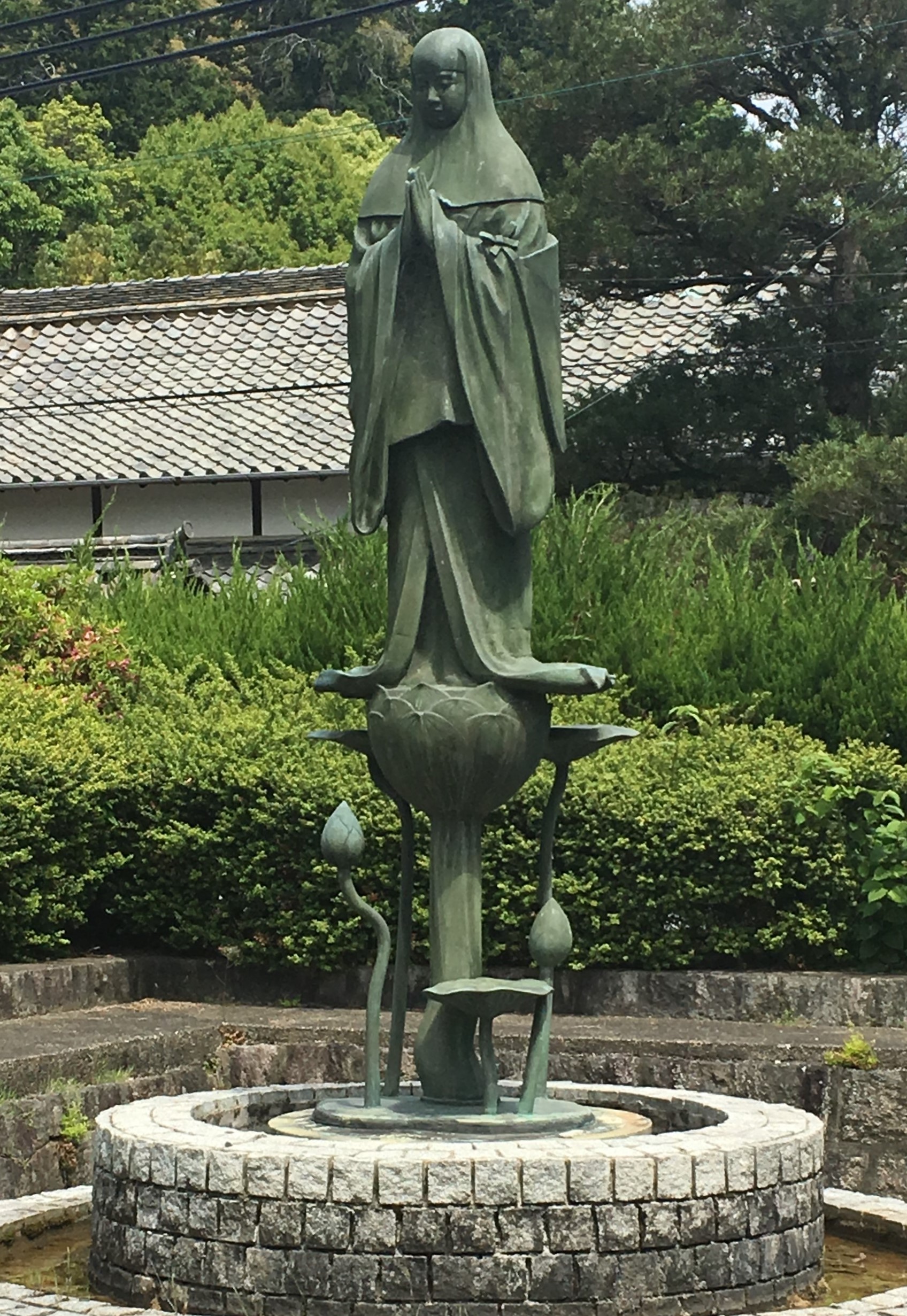
Chujo died at the young age of 29, but tales say that upon her death, Amida Butsu and 25 Bosatsu appeared to take her to Gokuraku-Jodo. Today Taima-dera holds the Nerikuyo Festival every year (April 14th) to commemorate the princess’s death.

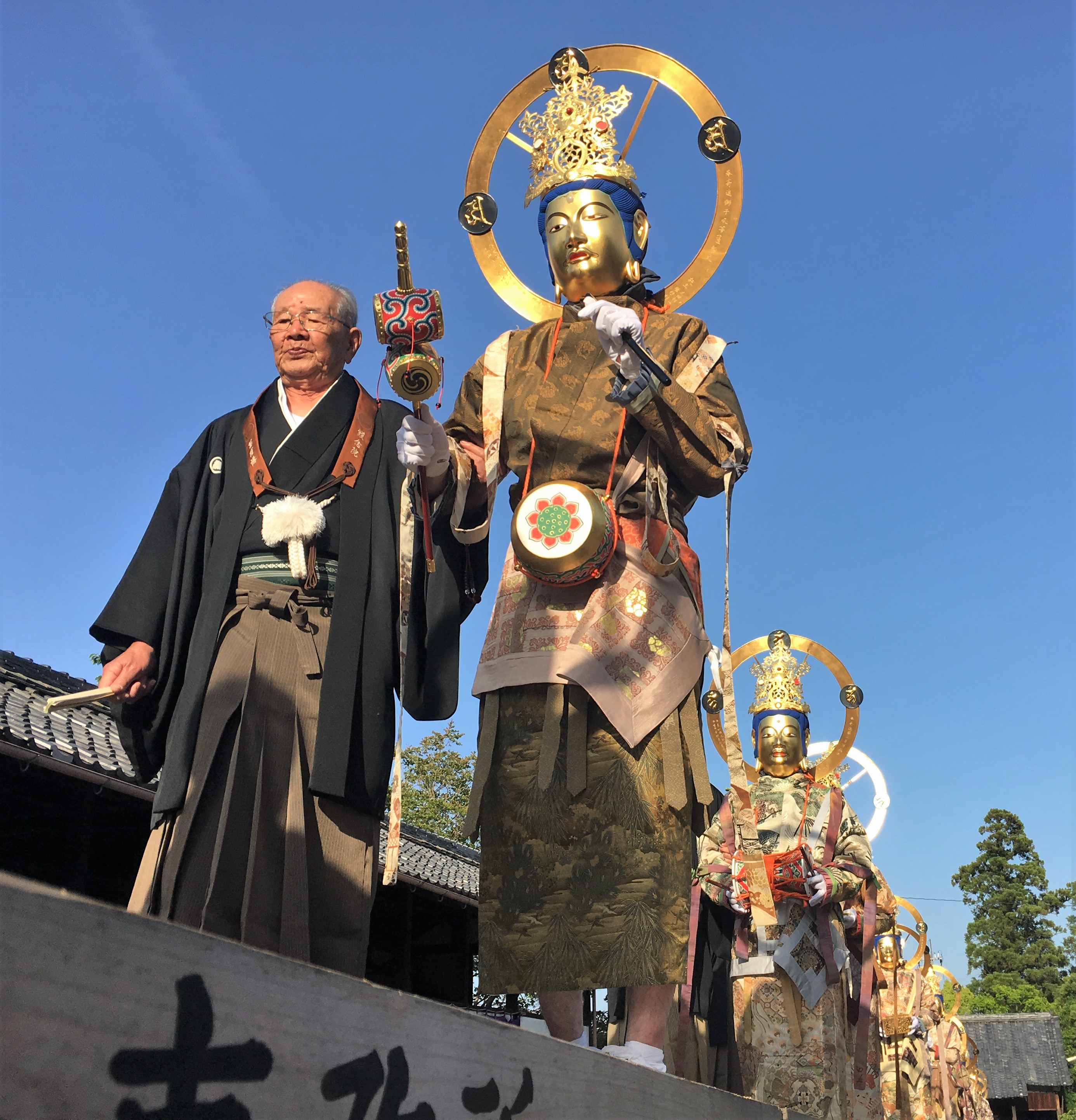
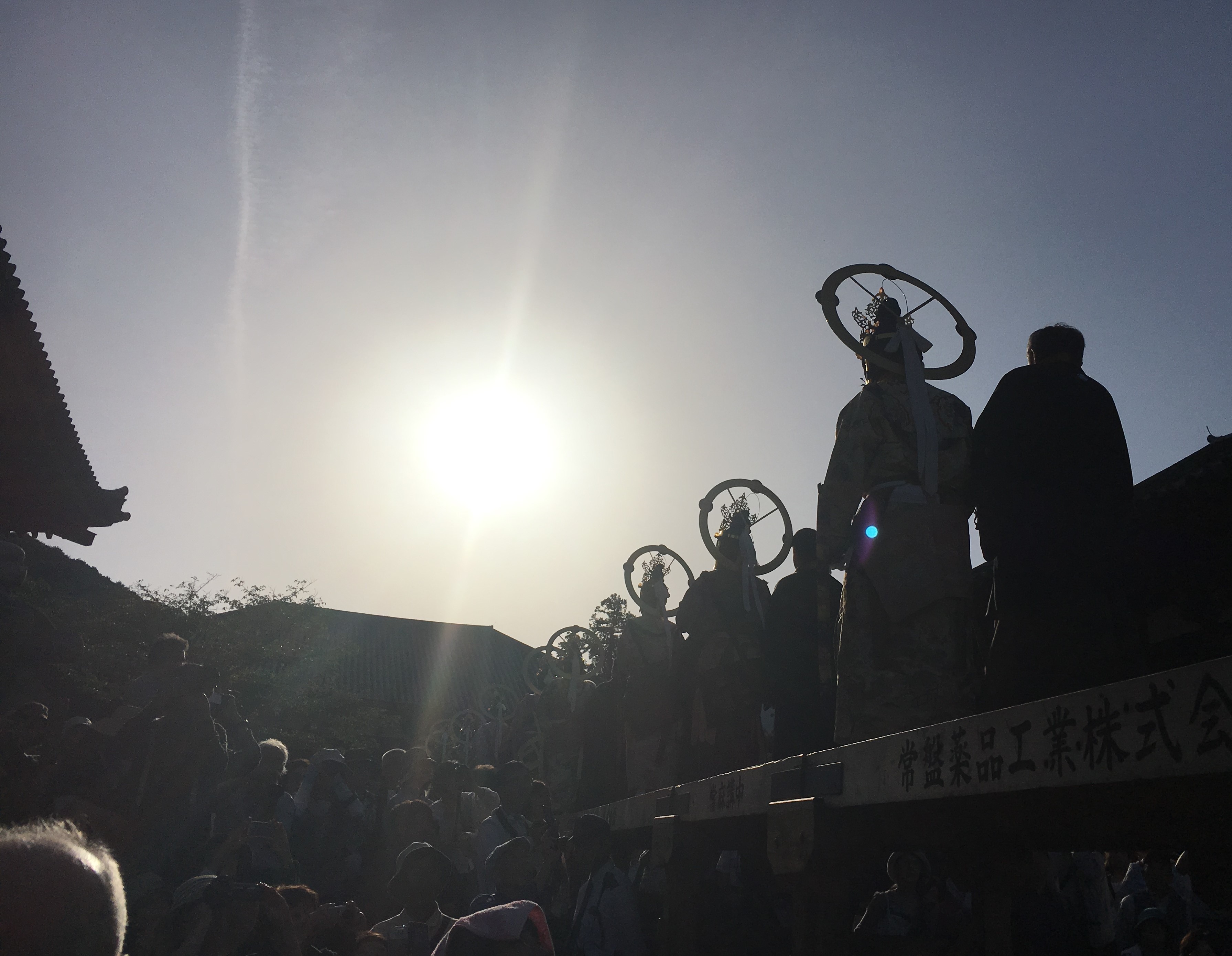
Temple Grounds
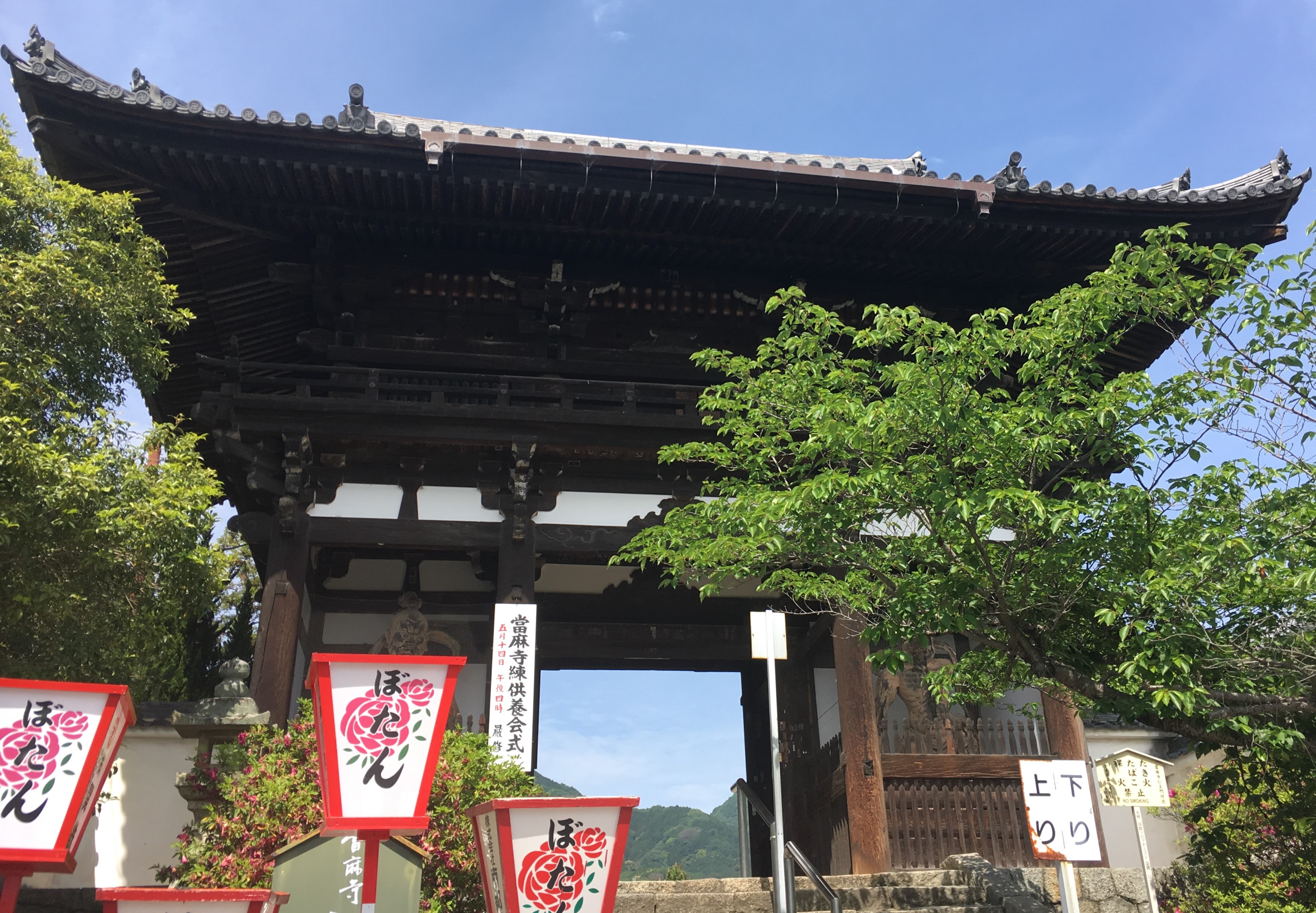
Upon entering the temple grounds, one of the very first things you will see an old bell. This bell is in fact the oldest bell in Japan, and is a Japanese National Treasure.
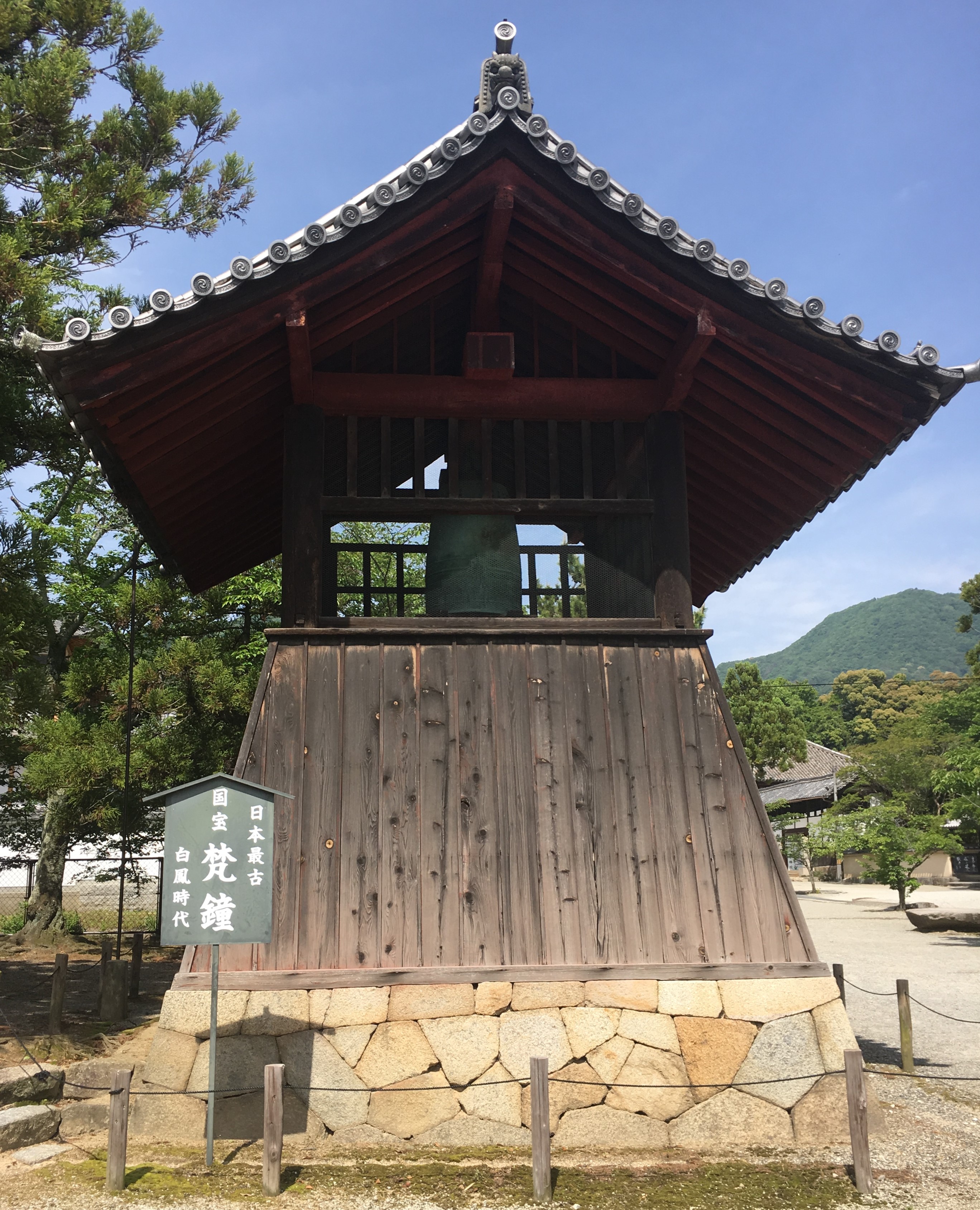
Since Taima-dera is quite large temple, let us pick up some of the very interesting things you should see.
Mandala-do [曼荼羅堂]
The main attraction of Taima-dera is the Mandala-do, which was built to enshrine Princess Chujo’s mandala in the 7th century. The Mandala-do is another Japanese National Treasure.

If you pay an additional 500 yen, you can get a special ticket that allows you inside not only the Mandala-do, but the kondo and the kodo. It is worth it! Inside the Mandala-do is a gigantic 4m wide mandala. Although, as stated, the original mandala by Princess Chujo it is no longer exhibited due to damage. The one that hangs in the Mandala-do is a near perfect copy from 1502. Believe me when I say it’s amazing.
While Mandala itself is replica, the frame is the original frame used in the 8th century. Also, Minamoto no Yoritimo, the first shogun of Kamakura government, donated the stage in front of the mandala. Both the frame and stage are designated as national treasure.
Kondo
While the Taima mandala is the most popular attraction, the original main deity of the temple is a statue of Mirokubutsu [弥勒仏] in the kondo. This Mirokubutsu i.e. Miroku Nyorai dates back to late 7th century and is the oldest clay Buddha statue in Japan.
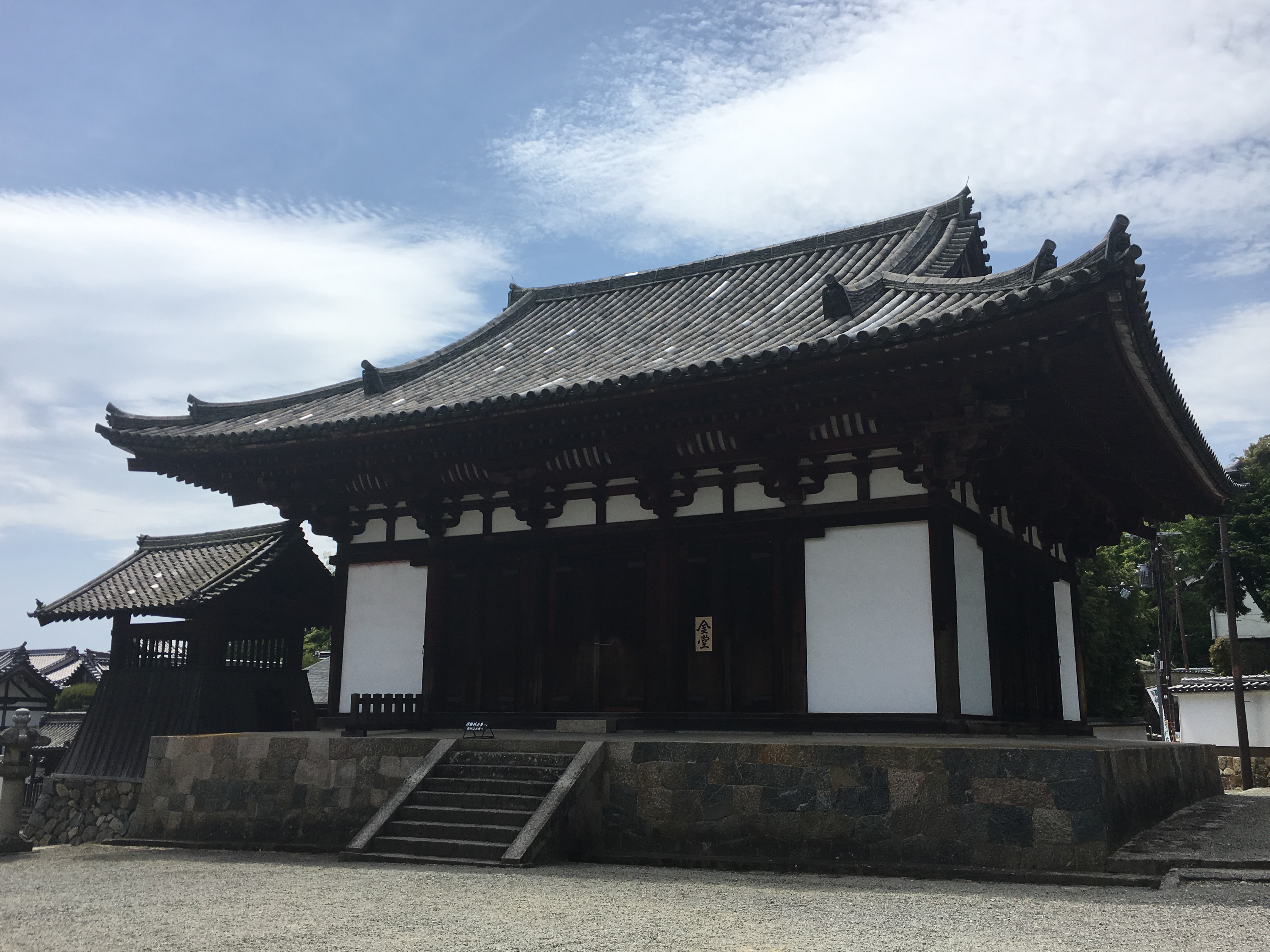
Mirokubutsu is surrounded by the Shitenno, the four famous guardians of Buddhism. These statues of them are the second oldest ones in Japan, the oldest being in Horyu-ji. Unlike more common statues, the faces of these statues are rather calm and surprisingly have mustache.
Pagoda
Another one of Taima-dera’s icons are the temple’s pagodas. The two pagoda, the Sai-to[西塔]and To-to [東塔], both date back to the late 7th century, with To-to being a little bit older of the two. There are only a few temples that have two pagodas, such as Yakushi-ji, but Taima-dera is the only one who pagodas are still the originals.
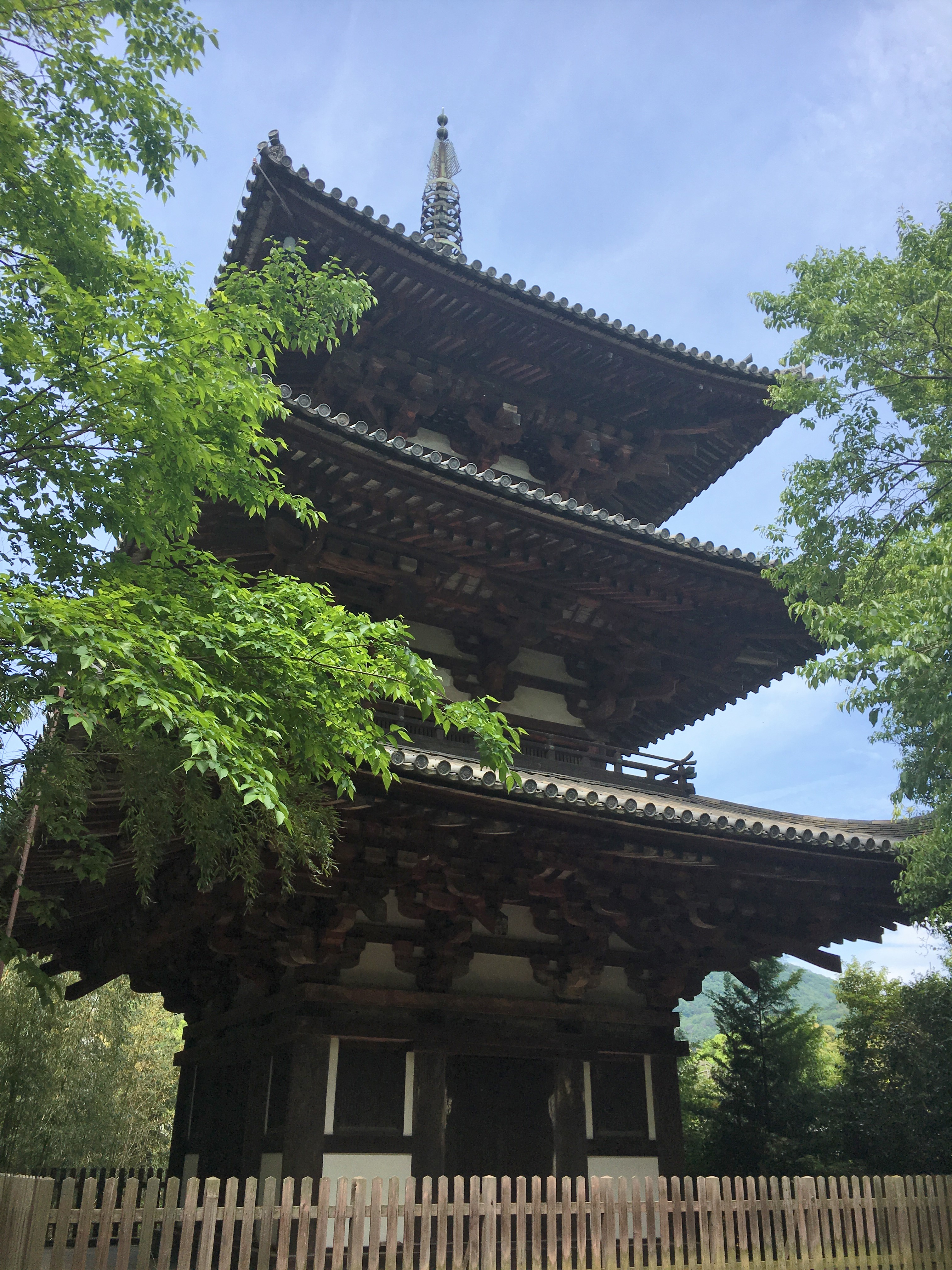

Points of Interest
Because of its history, Taima-dera has many little temples that are either from the Shingon or Jodo sect. On top of that, in Taima-dera, you have to pay each time you go in to those little temples, so be careful! Here are the little temple we actually went in.
Nakano-bo [中之坊]
Nakano-bo is the little temple where Princesses Chujo cut off her hair and became a nun. Among Taima’s little temples, the Nakano-bo is the most popular, so make sure to check it out!


Inside the Nakano-bo, the Koguen Garden[香藕園], which has the reputation of being one of the prettiest three gardens in Nara.
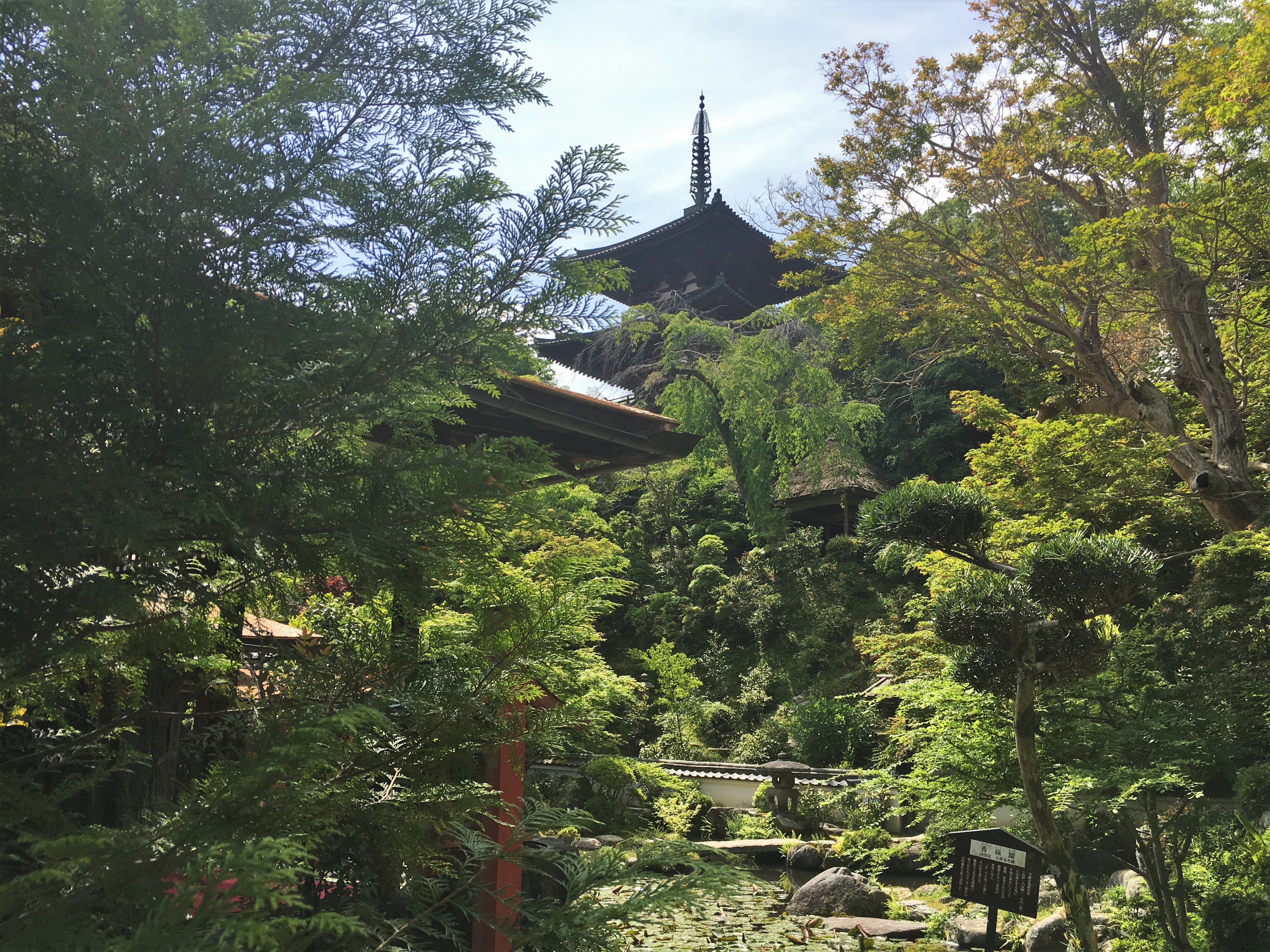

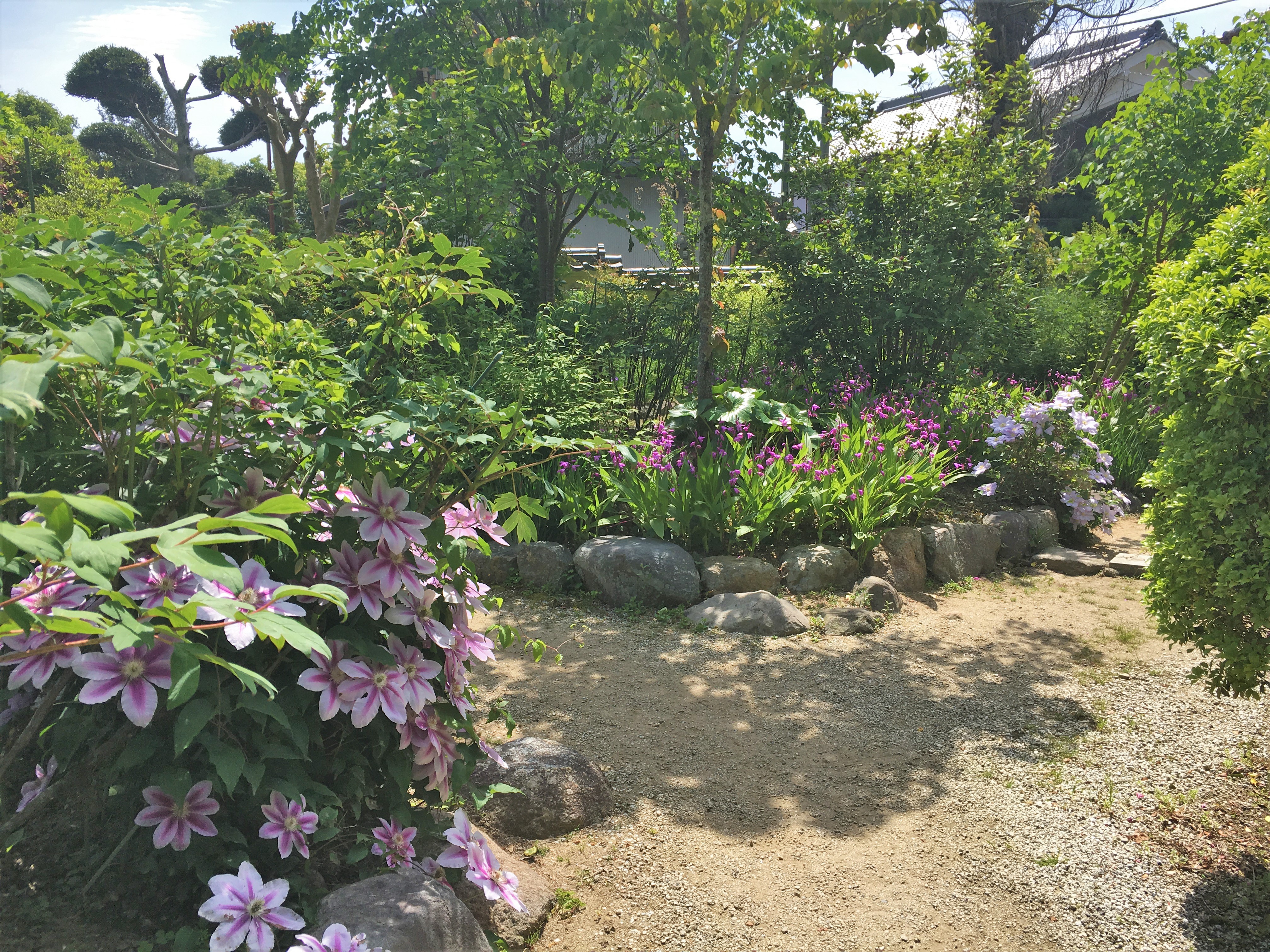
Okuno-in [奥院]
Behind the Mandala-do is the Okuno-in. While an Okuno-in commonly refers to a small version of the same temple, often located in the forest, this Okuno-in here is not Taima-dera’s but rather of Chion-in in Kyoto, the main temple of the Jodo sect. Because Taima mandala became so popular, Chion-in placed its Okunoin here.

There is also a very pretty garden behind the temple buildings.
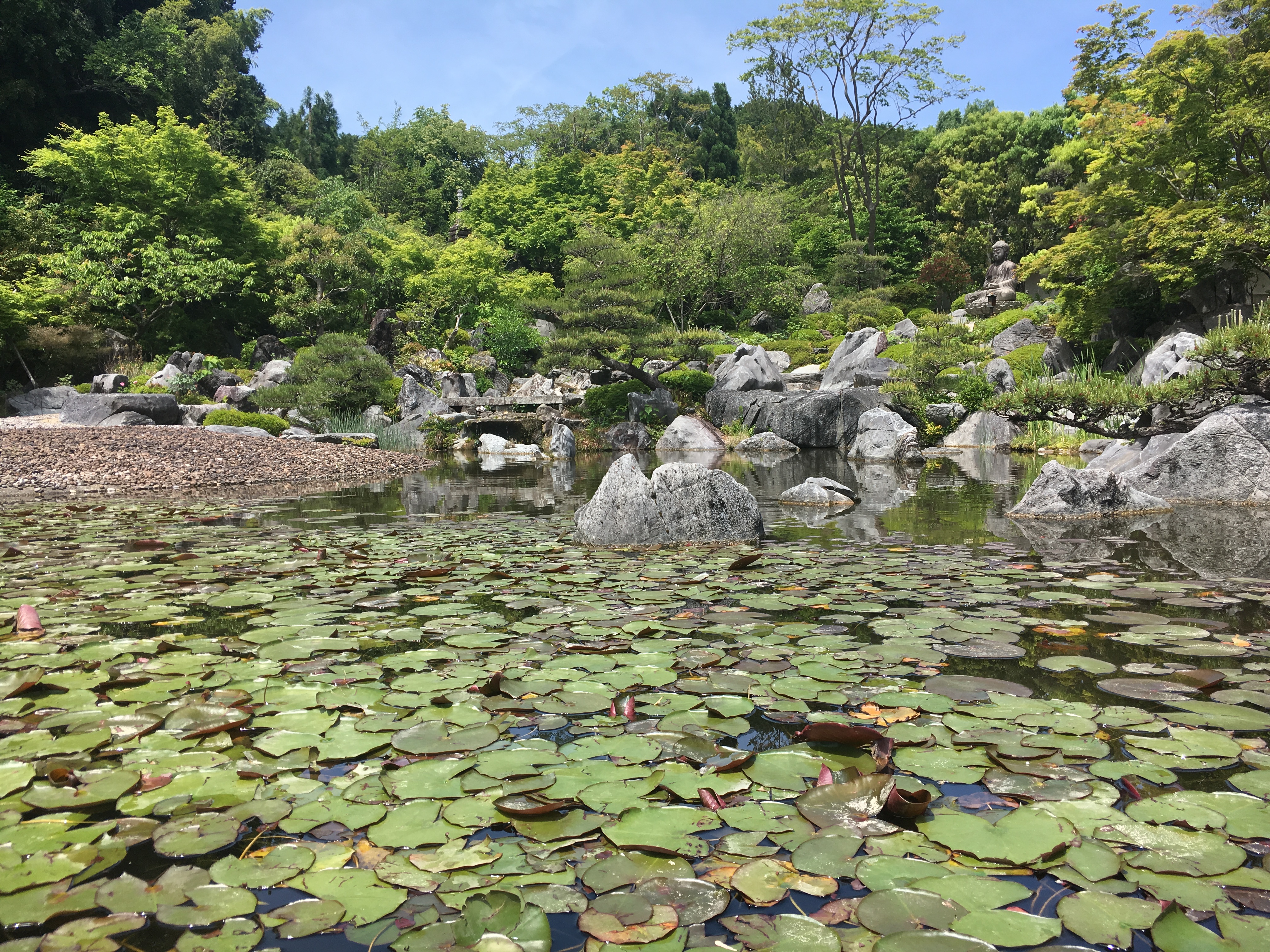

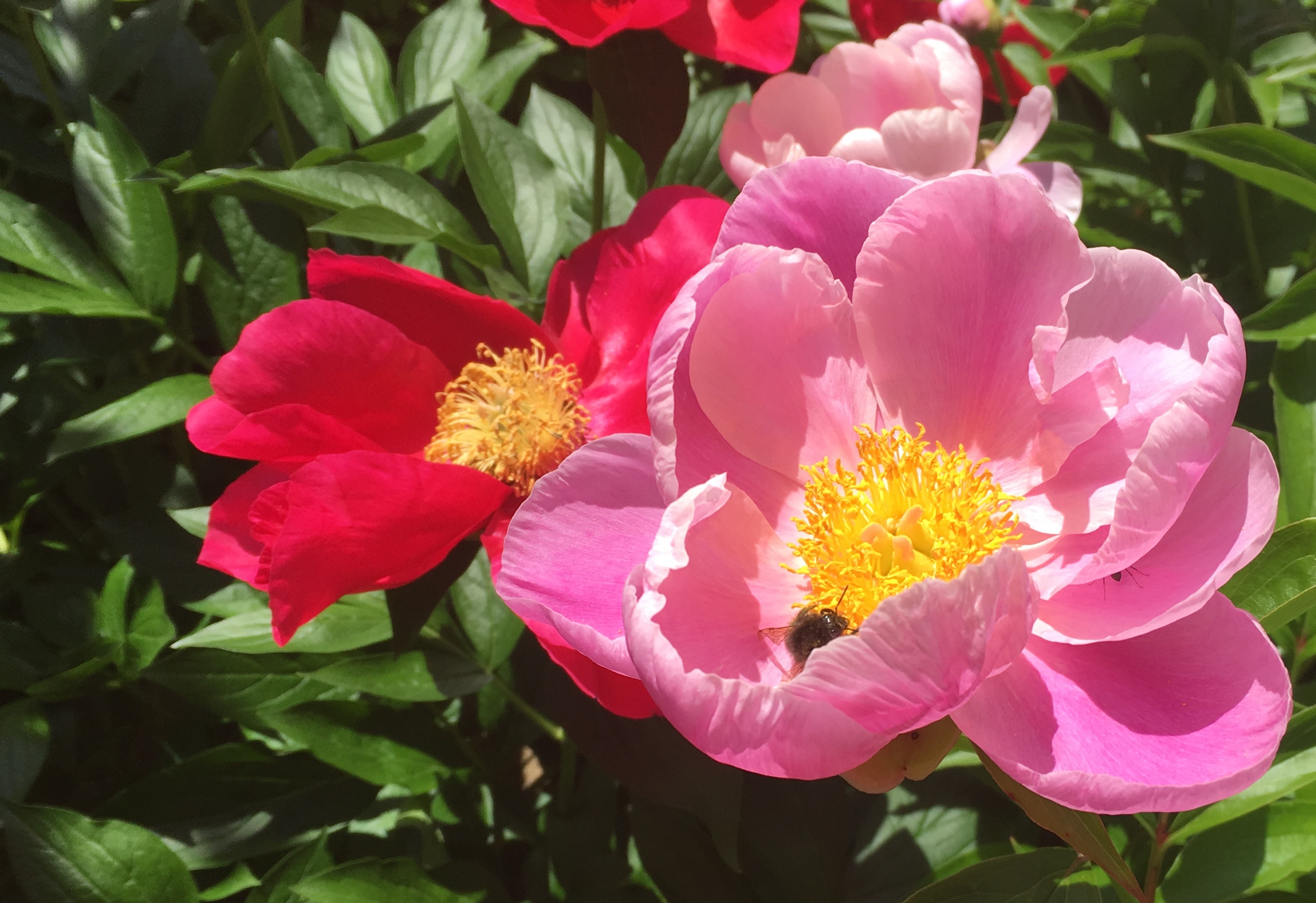
When we went to Taima-dera, we really had no idea what to expect. I especially had no idea just how gigantic the Taima Mandala actually was until I saw it. The temple grounds are also pretty big and it can take a while to really walk around and explore. One of the things we didn’t have time to do was participate in the meditative ink painting sessions held in the Nakano-bo. These session are pretty popular, but you need roughly an hour, which we just didn’t have. We could have easily spent much longer at Taima-dera than we did, so I can imagine we will be back someday for a second trip!!
Information: Taima-dera
| Address |
| 1263 Taima Katsuragi City, Nara prefecture
|
| Access |
| 20 minutes on foot from Taima Station off Kintetsu Minami Osaka Line
|
| Hours |
| 9AM-5PM
|
| Entrance Fee |
| 500 yen (Nakanobo) 500 yen (Mandalado, Kondo, Kodo) 300 yen (Okuno-in)
|
| Notes |
| Make sure to try Chujomochi in front of Taima-dera Station!!
|


Leave a Reply